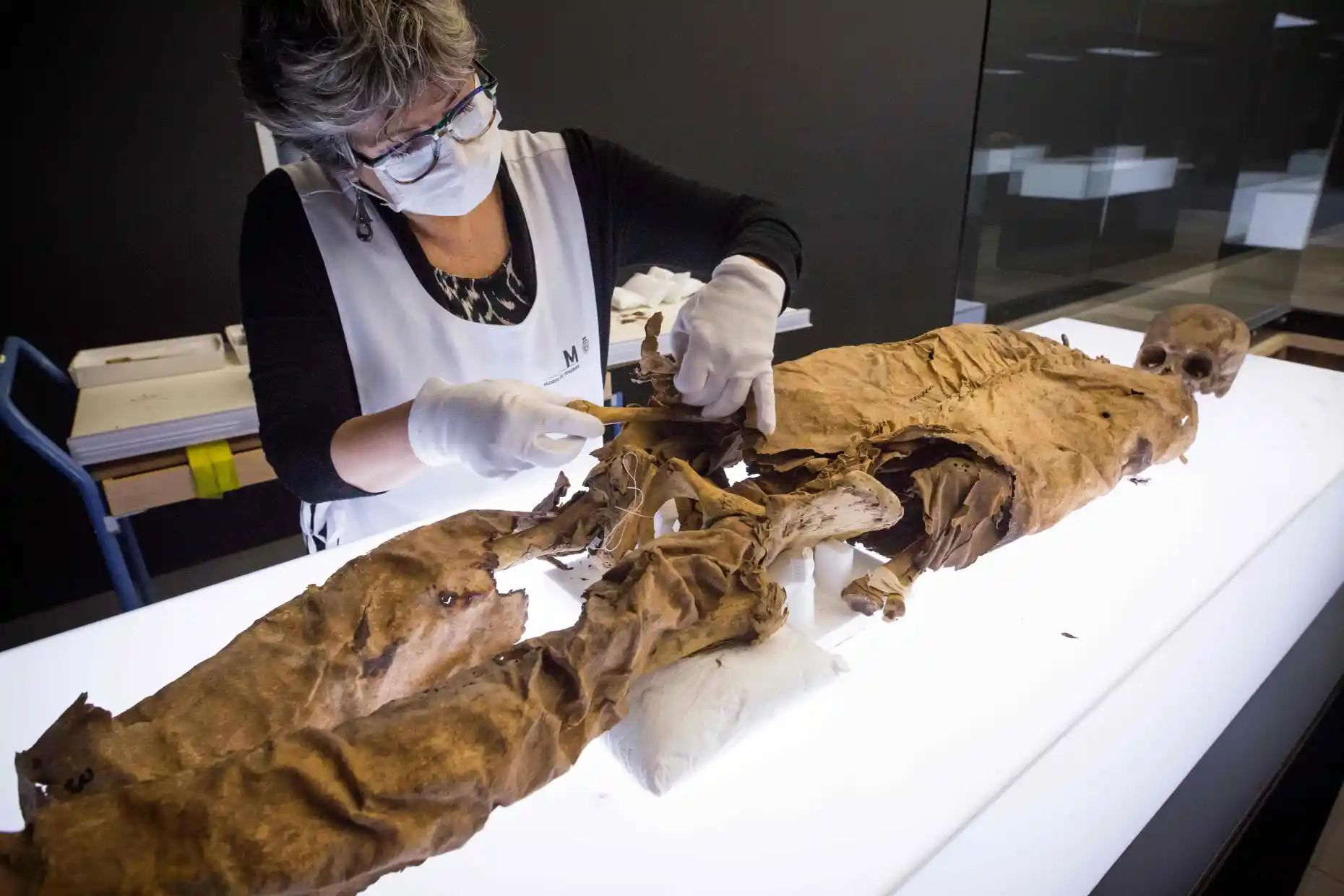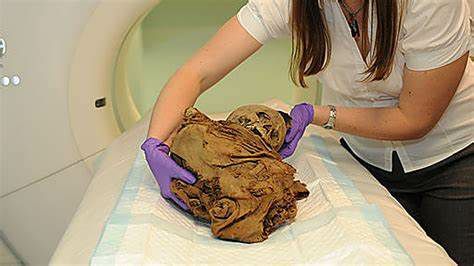“Unearthing Possibilities: Mummy Research’s Potential in Discovering Cures for Modern Ailments”.
Studying diseases in ancient populations and comparing them to present-day equivalents can provide valuable insights into disease spread and potential strategies for prevention. Recent advancements in medical tools, such as DNA sequencing and CT scanning, have allowed researchers to examine the health of ancient civilizations through mummies, offering a wealth of information about diseases and their evolution.
One significant discovery made through the examination of mummies is the prevalence of atherosclerosis, a dangerous artery hardening condition that can lead to heart attacks and strokes. Researchers found signs of atherosclerosis in mummies from different regions and time periods, suggesting that the condition may have genetic factors that have been present in humans across the globe for centuries. Identifying these genes could potentially lead to the development of new drugs for heart disease.
Furthermore, DNA sequencing and CT scans have been instrumental in diagnosing causes of death in mummies and identifying various diseases, ranging from prostate cancer to malaria. By comparing ancient forms of these diseases with contemporary counterparts, researchers can gain insights into their evolution and understand what makes them particularly harmful. This knowledge may pave the way for new approaches to prevention and treatment.
One example is tuberculosis (TB), a disease that affects millions of people each year. By studying mummies, researchers are uncovering information about the conditions in which TB thrived in the past. Preliminary DNA data suggests that Europeans might have introduced a particularly virulent strain of TB to the Americas. Additionally, researchers have observed that pre-Columbian Central Americans rarely show signs of TB symptoms, potentially due to their low-iron diet. This insight could lead to the development of drugs that inhibit the uptake of iron by the TB bacteria.
DNA sequencing is also being utilized to study Chagas disease, caused by the parasite Trypanosoma cruzi. By examining DNA from mummified bodies and comparing it to present-day samples, researchers can gain insights into the evolution and spread of the parasite. This information may contribute to improved treatment strategies for the disease.
Additionally, advancements in magnetic resonance imaging (MRI) are enabling researchers to visualize soft tissues in mummies, providing further opportunities for studying diseases and their impact on ancient populations.
In conclusion, the examination of diseases in ancient populations through mummies, facilitated by advancements in medical tools, offers valuable insights into disease spread and evolution. By comparing ancient diseases with their present-day counterparts, researchers can uncover crucial information and potentially develop new approaches for prevention and treatment. These studies not only contribute to our understanding of the past but also hold promise for improving human health in the future.
Hits: 1







